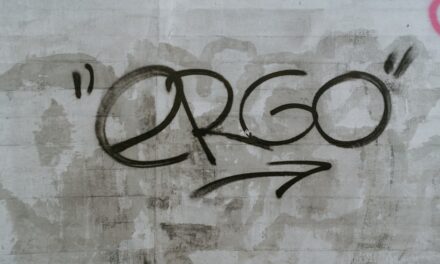Domenico Zampieri, more commonly known as Domenichino, was born in Bologna, Italy, in 1581. He was the son of a tailor, and from a young age, he exhibited a keen interest in the arts. His early exposure to the vibrant artistic environment of Bologna, a city renowned for its rich cultural heritage, played a significant role in shaping his artistic sensibilities.
At the tender age of 12, Domenichino began his formal training under the tutelage of the esteemed painter, Denis Calvaert. This apprenticeship provided him with a solid foundation in the techniques of painting and an understanding of the classical principles that would later inform his work. After his time with Calvaert, Domenichino further honed his skills by studying the works of the great masters of the Italian Renaissance.
He was particularly influenced by the works of Carracci and the Bolognese school, which emphasised a harmonious blend of naturalism and idealism. His training culminated in a period spent in Rome, where he absorbed the influences of the burgeoning Baroque movement. Here, he encountered the works of Caravaggio and other contemporaries, which would leave an indelible mark on his artistic development.
This combination of rigorous training and exposure to diverse artistic styles laid the groundwork for Domenichino’s distinctive approach to painting.
Summary
- Domenichino was born in Bologna, Italy, and trained under the Carracci brothers, who were influential in the development of the Baroque style.
- His style was influenced by the works of Raphael and Annibale Carracci, and he was known for his use of classical and naturalistic elements in his paintings.
- Domenichino’s major works include “The Last Communion of St. Jerome” and “The Martyrdom of St. Agnes,” and he received several important commissions, including from the Vatican and the Farnese family.
- Domenichino’s impact on Baroque art was significant, as he helped to popularise the use of classical and naturalistic elements in religious and mythological paintings.
- Despite his success, Domenichino faced controversies and criticisms, particularly from rival artists and critics who accused him of imitating the works of other artists.
Influences and Style
Domenichino’s style is often characterised by its clarity, elegance, and emotional depth. His early influences from the Bolognese school are evident in his use of colour and composition, which reflect a balance between realism and idealism. The influence of Carracci is particularly notable in his emphasis on naturalism and the human form, which he rendered with a sense of grace and fluidity.
However, it was during his time in Rome that Domenichino’s style began to evolve into a more personal expression, incorporating elements of the emerging Baroque aesthetic. The dramatic use of light and shadow, known as chiaroscuro, became a hallmark of Domenichino’s work as he sought to create a sense of depth and volume. His compositions often feature dynamic poses and intricate narratives that engage viewers on both an emotional and intellectual level.
The influence of Caravaggio is palpable in his later works, where he adopted a more theatrical approach to storytelling. This synthesis of influences resulted in a unique style that combined the clarity of the Bolognese tradition with the emotional intensity characteristic of Baroque art.
Major Works and Commissions
Domenichino’s career was marked by several significant works and prestigious commissions that solidified his reputation as one of the leading painters of his time. One of his most celebrated pieces is “The Communion of Saint Jerome,” painted between 1614 and 1616 for the church of San Girolamo della Carità in Rome. This work exemplifies his mastery of composition and colour, as well as his ability to convey profound spiritual themes.
The painting depicts Saint Jerome receiving communion with an expression of deep reverence, surrounded by angels that enhance the ethereal quality of the scene. Another notable commission was for the frescoes in the Palazzo Aldobrandini, where Domenichino created a series of works that showcased his skill in large-scale compositions. Among these frescoes is “The Triumph of Saint Agnes,” which captures the moment of her martyrdom with dramatic intensity.
The dynamic arrangement of figures and the vibrant colour palette demonstrate Domenichino’s ability to convey emotion through visual storytelling. His work on these commissions not only garnered acclaim but also established him as a prominent figure within the Roman art scene.
Domenichino’s Impact on Baroque Art
Domenichino’s contributions to Baroque art were significant, as he played a pivotal role in shaping the direction of painting during this transformative period. His ability to blend classical ideals with the emotional depth characteristic of Baroque aesthetics set him apart from many of his contemporaries. His works often reflect a deep engagement with religious themes, exploring complex narratives that resonate with viewers on multiple levels.
This focus on spirituality and human experience became a defining feature of Baroque art. Moreover, Domenichino’s influence extended beyond his own creations; he served as a mentor to younger artists who would go on to shape the future of Italian painting. His emphasis on clarity and composition inspired subsequent generations, including artists such as Giovanni Battista Salvi da Sassoferrato and Francesco Albani.
The techniques he employed, particularly in terms of colour application and figure arrangement, became foundational elements for many Baroque painters who sought to emulate his success.
Controversies and Criticisms
Despite his acclaim, Domenichino’s career was not without its controversies and criticisms. One notable incident occurred during his time working on frescoes for the church of San Lorenzo in Rome. His ambitious project faced scrutiny from patrons who were dissatisfied with certain aspects of his work.
Critics argued that some figures appeared overly idealised or lacked the emotional resonance expected from Baroque art. This backlash led to tensions between Domenichino and his patrons, ultimately resulting in him abandoning the project before its completion. Additionally, Domenichino faced competition from other prominent artists, such as Guido Reni and Francesco Borromini, who were also vying for commissions in Rome.
This rivalry sometimes overshadowed his achievements and led to debates about his artistic merit compared to his contemporaries. While some critics praised his technical prowess, others felt that he lacked the raw emotional power found in the works of Caravaggio or other Baroque masters. These controversies highlight the challenges faced by artists during this period as they navigated complex relationships with patrons and peers.
Legacy and Influence on Later Artists
Domenichino’s legacy is profound, as he left an indelible mark on the trajectory of Baroque art and influenced countless artists who followed in his footsteps. His innovative approach to composition and colour application set new standards for narrative painting, inspiring artists across Europe. The clarity and elegance that characterised his work became hallmarks for subsequent generations seeking to balance realism with idealism.
In particular, Domenichino’s impact can be seen in the works of later Baroque painters such as Nicolas Poussin and Claude Lorrain, who admired his ability to convey complex narratives through visual means. His emphasis on emotional depth resonated with artists exploring similar themes during the 17th century and beyond. Furthermore, his techniques were studied by neoclassical painters in the 18th century who sought to revive classical ideals while incorporating elements from the Baroque tradition.
Domenichino’s Techniques and Materials
Domenichino’s mastery of techniques and materials played a crucial role in defining his artistic style. He employed traditional oil painting methods that allowed for rich colour saturation and subtle gradations of light and shadow. His palette was characterised by vibrant hues that conveyed both warmth and depth, enhancing the emotional impact of his subjects.
The careful layering of paint enabled him to achieve a luminosity that brought his figures to life. In addition to oil paints, Domenichino was skilled in fresco techniques, which he utilised for many large-scale commissions. His understanding of how pigments interacted with different surfaces allowed him to create dynamic compositions that could withstand the test of time.
The meticulous attention he paid to detail is evident in both his smaller canvases and expansive frescoes, showcasing his commitment to craftsmanship alongside artistic expression.
Domenichino’s Place in Art History
Domenichino occupies a significant place in art history as one of the foremost figures of the Baroque period. His ability to synthesise classical ideals with emotional depth set him apart from many contemporaries and established him as a key player within the Roman art scene. While he may not have achieved the same level of fame as some of his peers, such as Caravaggio or Bernini, his contributions have been increasingly recognised by art historians over time.
Today, Domenichino is celebrated not only for his technical prowess but also for his ability to convey complex narratives through visual storytelling. His works continue to be studied for their innovative compositions and emotional resonance, ensuring that he remains an enduring figure within the canon of Western art history. As scholars delve deeper into his life and oeuvre, it becomes clear that Domenichino’s legacy is one that transcends time, influencing generations of artists who seek to explore the intersection between beauty and meaning in their work.
For those interested in exploring different artistic techniques, a related article worth checking out is “Photorealism in Digital Art: High-Resolution Techniques”. This article delves into the intricate process of creating hyper-realistic digital artwork, providing insights into the tools and methods used to achieve stunning levels of detail. It offers a fascinating look at how technology has revolutionised the art world, allowing artists to push the boundaries of realism in their work.
FAQs
Who was Domenichino?
Domenichino, whose real name was Domenico Zampieri, was an Italian Baroque painter of the Bolognese School. He was born in 1581 and died in 1641.
What is Domenichino known for?
Domenichino is known for his religious and mythological paintings, as well as his frescoes. He was highly regarded for his skill in composition, drawing, and colour.
What are some of Domenichino’s most famous works?
Some of Domenichino’s most famous works include “The Last Communion of St. Jerome,” “Diana and her Nymphs,” and “The Martyrdom of St. Agnes.”
What was Domenichino’s artistic style?
Domenichino’s artistic style was influenced by the Carracci brothers and the classical principles of the High Renaissance. He was known for his harmonious compositions, use of light and shadow, and attention to detail.
Where can I see Domenichino’s artwork?
Domenichino’s artwork can be found in various museums and galleries around the world, including the Louvre in Paris, the National Gallery in London, and the Vatican Museums in Rome.


